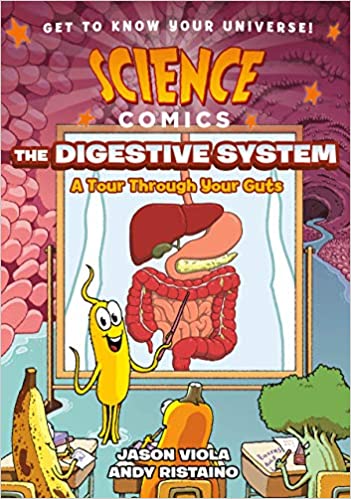The digestive system is a group of organs working together to break down food into tiny molecules. Digestion of food is important so that we can obtain energy from our food.
Mouth: Physical and chemical digestion
Physical digestion begins in the mouth where the food is chewed and broken down into smaller pieces by the teeth. There are four types of teeth - Incisors, Canines, Premolars and Molars. Chemical digestion also occurs in the mouth with chemicals called enzymes that chemically break down the food.
Oesophagus: Passes food to the stomach by peristalsis
After being chewed and swallowed, food passes through the esophagus a long tube that runs from the mouth to the stomach. The muscles in the wall of the oesophagus start to push the mushy bolus down into the stomach by waves called peristalsis. Peristalsis gives us the capability of being able to eat or drink even when we’re upside-down.
Stomach: Physical and chemical digestion
Once in the stomach, which is essentially a mixing and holding area, protein digestion begins. The food is churned and drenched in a very strong acid called Hydrochloric Acid. Partly digested food mixed with stomach acid is called chyme. Small Intestine (6 Meters Long): Chemical digestion and the absorption of nutrients into the blood After being further digestied in the stomach, food enters the small intestine**.** The first part of the small intestine is called the duodenum, the next part is the jejunum and the third and final part of the small intestine is called the ileum. In the small intestine, bile (produced in the liver and stored in the gall bladder), pancreatic enzymes, and other digestive enzymes produced by the inner wall of the small intestine further assist with the breakdown of food.
Pancreas: Contains digestive enzymes
Liver: Produces Bile (for the digestion of fats)
Large intestine: Absorption of water from the food remains
After passing through the small intestine, food enters the large intestine. In the large intestine, some of the water and electrolytes (chemicals like sodium) are removed from the food. Many microbes (bacteria like Bacteroides, Lactobacillus acidophilus, Escherichia coli, and Klebsiella) in the large intestine help in the digestion process.
Rectum - The end of the line: The remains of food and water is stored in the rectum.
Solid waste is then stored in the rectum until it is excreted via the anus. Help your kids identify and locate the major parts of the digestive system including the mouth, eosophagus, stomach, liver, pancreas, small intestine and large intestine, and know their functions. Our Digestive System for Kids image below is a great way to explain digestion to kids. The next time your kids eat a healthy snack you should help them follow along the map of where their food travels from mouth to toilet (always a fun topic in our house).


